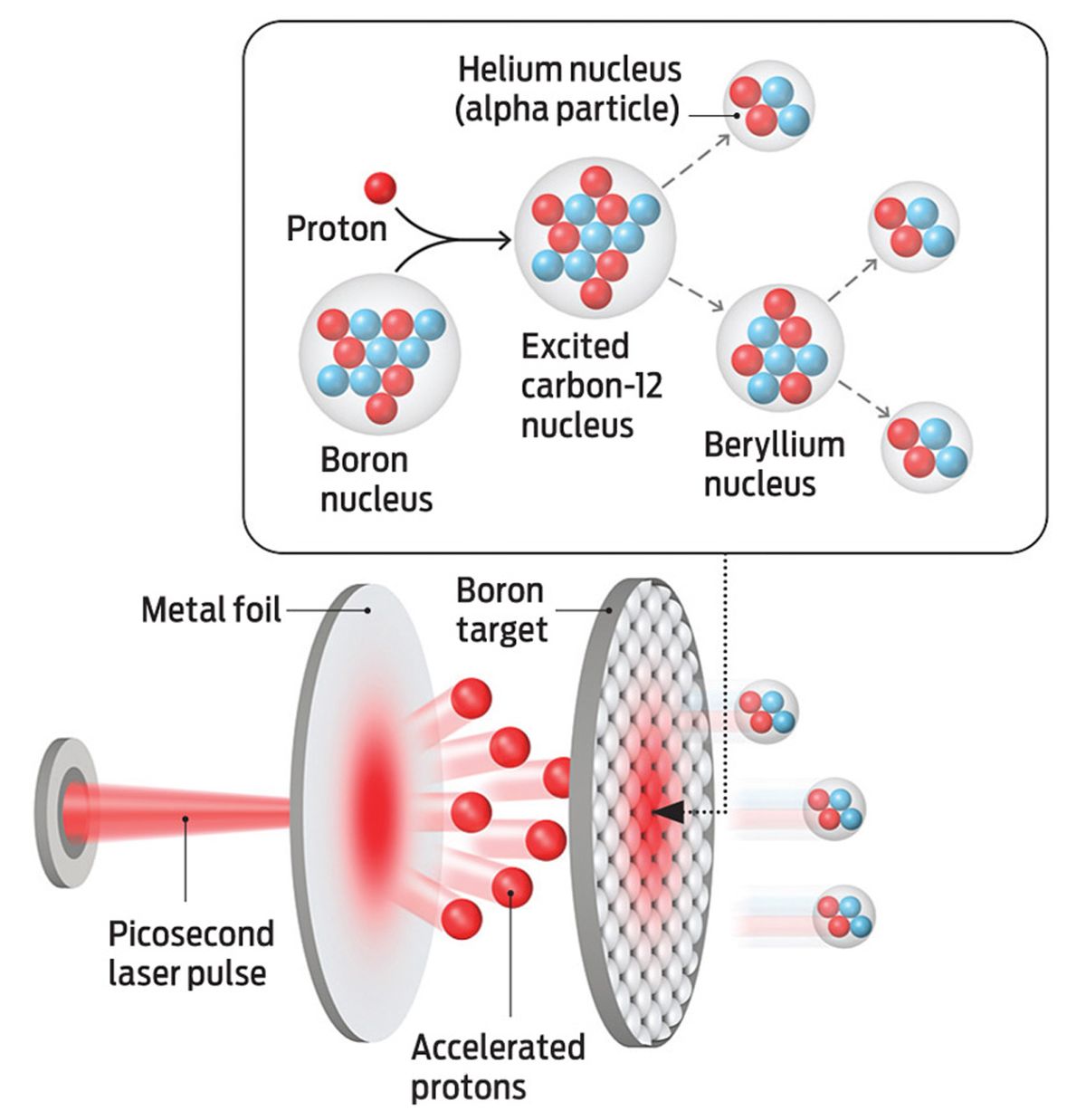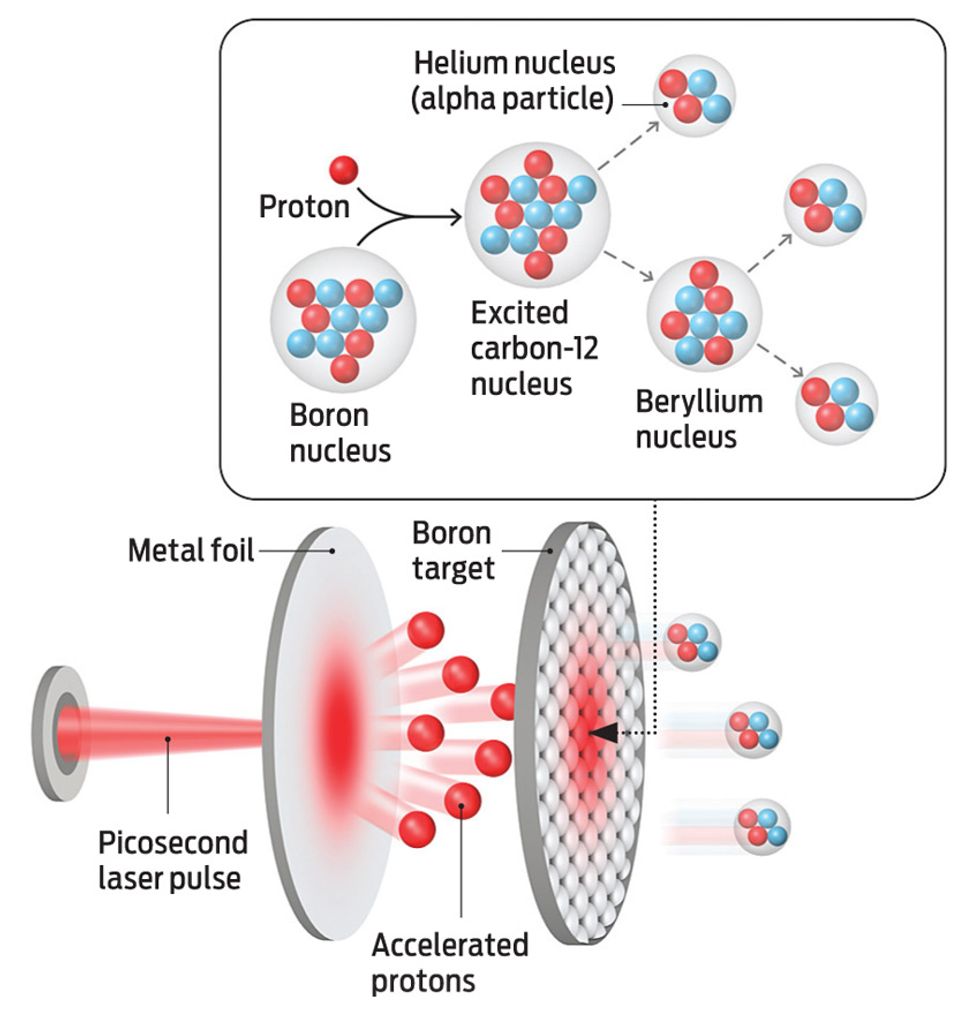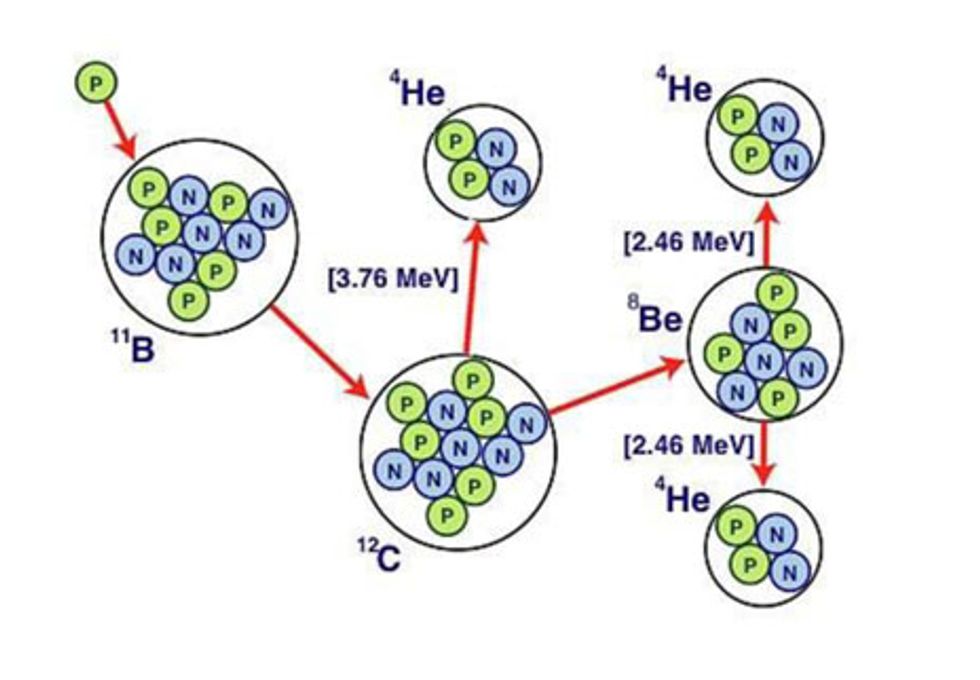28 June 2011—Designers of satellites obsess about how little fuel their creations are able to carry into space. So the propulsion method they choose for maneuvers such as orbital transfers has to deliver a lot for a little.
Now a NASA engineer has come up with a new way to fling satellites through space on mere grams of fuel, tens of times as efficiently as today’s best space probe thrusters. The answer, he says, is fusion. You might be thinking, "Fusion? Really?" But it’s not as far-fetched as it sounds at first blush. The engineer delivered the details today at the IEEE Symposium on Fusion Engineering in Chicago.
Instead of using deuterium and tritium as the fuel stocks, the new motor extracts energy from boron fuel. Using boron, an "aneutronic" fuel, yields several advantages over conventional nuclear fusion. Aneutronic fusion, in which neutrons represent less than 1 percent of the energy-carrying particles that are the result of a reaction, is easier to manage. "Neutrons are problematic, because for one thing they’re difficult to harness," says John J. Chapman, the concept’s inventor and a physicist and electronics engineer at NASA’s Langley Research Center, in Virginia. To make use of neutrons, "you need an absorbing wall that converts the kinetic energy of the particles to thermal energy," he says. "In effect, all you’ve got is a fancy heat engine, with all its resultant losses and limitations."
In Chapman’s aneutronic fusion reactor scheme, a commercially available benchtop laser starts the reaction. A beam with energy on the order of 2 x 1018 watts per square centimeter, pulse frequencies up to 75 megahertz, and wavelengths between 1 and 10 micrometers is aimed at a two-layer, 20-centimeter-diameter target.
The first layer is a 5- to 10-µm-thick sheet of conductive metal foil. It responds to the teravolt-per-meter electric field created by the laser pulse by "acting as a de facto proton accelerator," says Chapman. The electric field releases a shower of highly energetic electrons from the foil, leaving behind a tremendous net positive charge. The result is a massive self-repulsive force between the protons that causes the metal material to explode. The explosion accelerates protons in the direction of the target’s second layer, a film of boron-11.
There, a complicated nuclear dance begins. The protons (which carry energy on the order of roughly 163 kiloelectron volts) strike boron nuclei to form excited carbon nuclei. The carbons immediately decay, each into a helium-4 nucleus (an alpha particle) and a beryllium nucleus. Almost instantaneously, the beryllium nuclei decay, with each one breaking into two more alpha particles. So for each proton-boron pair that reacts, you get three alpha particles, each with a kinetic energy of 2.9 megaelectron volts.
Electromagnetic forces push the target and the alpha particles in the opposite directions, and the particles exit the spacecraft through a nozzle, providing the vehicle’s thrust. Each pulse of the laser should generate roughly 100 000 particles, making the method tremendously efficient, says Chapman. And according to his calculations, improvements in short-pulse laser systems could make this form of thruster more than 40 times as efficient as even the best of today’s ionic propulsion systems that push spacecraft around. Even at 50 percent efficiency, burning off 40 milligrams of the boron fuel would deliver a gigajoule of energy. The amount of power depends on the laser pulse rate. The motor could generate 1 megawatt per second if the pulses are frequent enough to start reactions that consume that amount of boron in 1000 seconds. (According to Chapman, using this aneutronic fusion technique with helium-3 isotopes would yield roughly 60 percent more energy per unit mass. But boron is a more attractive fuel source because it is abundant on Earth and helium-3 is scarce.)
Another big advantage of fusion space propulsion, Chapman claims, is that some of the energy can be converted into electricity to power a spacecraft’s onboard control systems. "A traveling wave tube—basically an inverse klystron—captures most of the particles’ flux kinetic energy and efficiently converts it into electrical energy," says Chapman. The process, he says, is 60 to 70 percent efficient.
The NASA engineer acknowledges that this collection of ideas is still a long way from being a practical device. For example, losses from the alpha particles striking the walls of the exhaust nozzle or each other lower the net power output. Figuring out how to control the particles’ path is an important consideration.
Asked how long it will be before his fusion reactor is pushing spacecraft toward Mars, Chapman acknowledges that a decade of work might be required before that happens. "It takes teamwork to get something to the point where you put it in space," he says. His aim so far is "to get the idea out so other minds can begin thinking about it."
This article was updated on 26 July 2011.
Willie Jones is an associate editor at IEEE Spectrum. In addition to editing and planning daily coverage, he manages several of Spectrum's newsletters and contributes regularly to the monthly Big Picture section that appears in the print edition.





